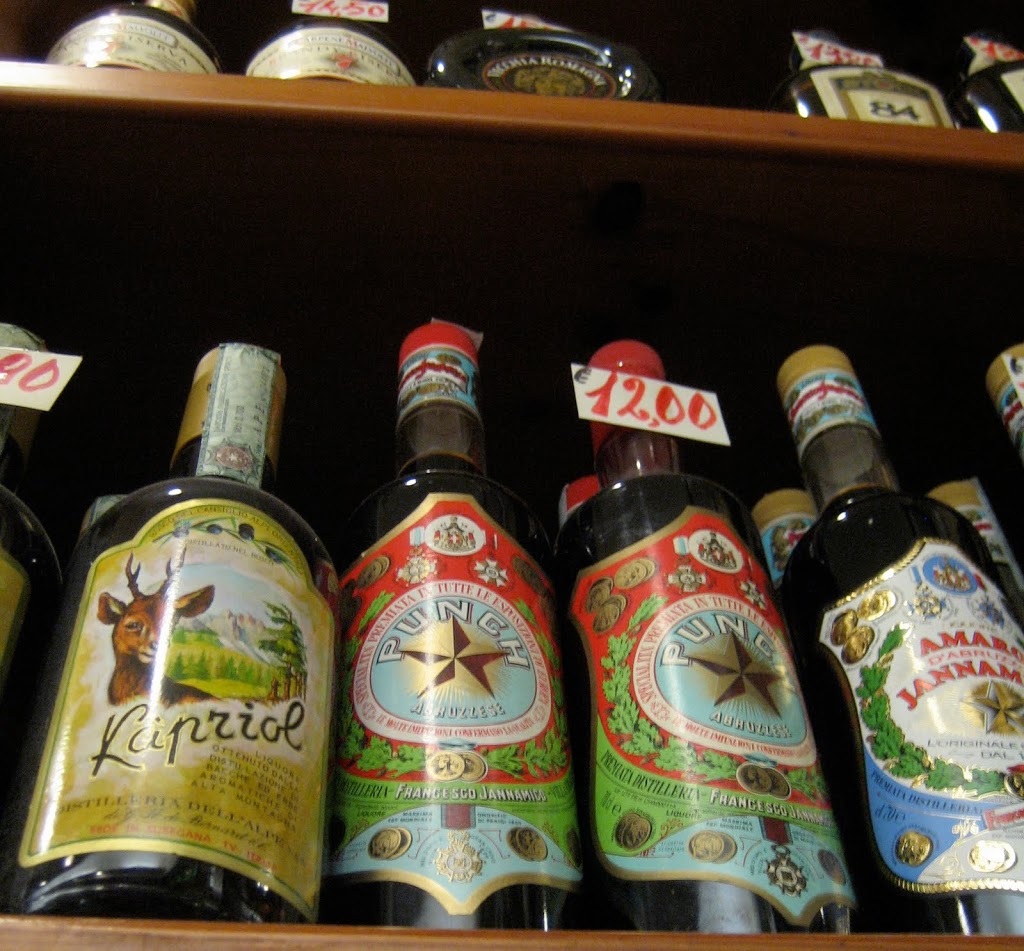
I was so happy to see Eric Asimov’s piece in this week’s New York Times Dining section on Italian digestives! Although I am definitely a grappa girl when it comes to after dinner drinks, I love the idea of amaro. And when I do find one that’s not over-sweet, tasting of wild herbs and citrus, it is a thing of joy. I’ll leave it to Eric to explain the history and allure of these supposedly medicinal herbal liqueurs. He rightly makes the point that amaro is the perfect remedy to Thanksgiving over indulgence. He was lucky enough to sample hard-to-find bottles like Girolamo Luxardo, Quintessentia and Fernet d’Italia at the upper east side restaurant Convivio. You’ll probably find less of a choice in your own local Italian restaurant, and even if you live in Italy most places tend to stick to the tired and true Averna, Cynar or Fernet Branca.
The complexity, variety and sometimes just plain weirdness of Italian amaro means that you usually love them or hate them. Most people have their favorites, but it’s always an adventure trying out new ones (although I am convinced that Convivio’s flight of five amari is a recipe for a headache) And with hundreds still produced all over Italy, each with its own secretly-guarded formula, it’s way too easy to try something new. (Personally I like the bottles. The decidedly old-fashioned labels – with old typeface, rustic maps and lots of gold leaf – are hard to resist.)
Two of my favorite haunts for searching out hard-to-find amari are quite near each other, both facing Rome’s opera house (and conveniently too-near my yoga studio.)
Chirra, located on Via Torino, is a place I know almost too well. I usually head here for otherwise difficult-to-find-in-Rome imported bottles of the hard stuff like Maker’s Mark when I want an Old Fashioned or something other than supermarket vodka for a martini. But I always end up falling into a trance in front of the huge selection of amari. It may be my post-yoga bliss, but I just love the names and the designs of Kapriol, Casauria and Florio. The friendly staff is helpful, and you can actually try some of the amari, since half the shop is a bar.
Angelini Enoteca, at Via del Viminale, is a slightly weirder place. Its dusty windows are stacked with a huge collection of bottles – some empty, some just old and dusty, all interesting. Looking for a bottle of nameless red wine with a label featuring Mussolini or the Pope? This is the place to go. Angelini has been in business since 1880, as the current owner, Enrico, is more than happy to explain. It was his grandfather who opened the shop, when the building was built, and they have been here ever since. Luckily, if you are in the mood for discontinued and hard to find regional amari, some of the stock has also been on the shelves for decades. Several dusty bottles of Amaro Kambusa must be among the only left around. It was sitting next to an even dustier bottle of Braulio Riserva (who knew amari even had riservas?)
It’s hard to generalize about amaro, since it changes so much from region to region. Angelini, with their over 40 amari, seems to cover all the regions – including some that I have a feeling are no longer even part of Italy.
Enoteca Chirra
Via Torino 132
06 485659
Open until 2am every night, closed Sundays.
Angelini Enoteca
Via del Viminale 62
06 4881028
Open every day, except Sundays
Hours…whenever Enrico feels like it. Enrico usually shows up by early afternoon. Often closed before noon.
Leave a Reply (comments are moderated)